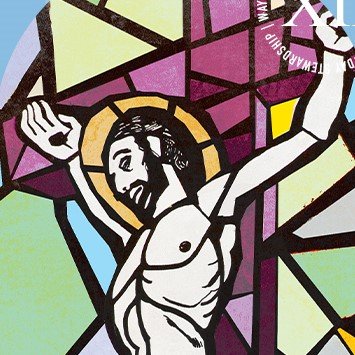On September 14, 1224—feast of the Exultation of the Holy Cross—while making a retreat in the mountains of La Verna, a seraph visited St. Francis of Assisi during his prayer. The saint was asking how to better please God, so he opened the Bible several times to read God’s Word. Repeatedly he opened to the account of our Lord’s crucifixion. He sensed that it was Christ’s crucifixion that best pleased God.
St Francis prayed: “O Lord Jesus Christ, before I die I ask you for two graces; first, that in my lifetime I may feel, as far as possible, both in my soul and body, that pain which you, sweet Lord, endured in the hour of your most bitter Passion; second, that I may feel in my heart as far as possible that excess of love which moved you, O Son of God, to suffer so cruel a Passion for us sinners.”
As he prayed an angelic seraph appeared descending from heaven. The angel had six fiery and shining wings. Seraphim (or seraphs) are those angels who are closest to God, in constant praise and worship of his majesty, singing “Holy, holy, holy.” Between the seraph’s wings appeared a figure of a man whose hands and feet were fastened to a cross. Two wings floated above the head of the man, two extended outward for flight, and two covered his body.
Upon seeing this, St. Francis was flooded with emotions of both joy and sorrow: the tender and affectionate look of Christ towards him as he was carried by the seraph filled St. Francis with joy; yet the pain of being nailed to the cross caused St. Francis to experience great sorrow. This led to a wonderful dialogue of flaming love.
When the vision ended, St. Francis realized that he had received the stigmata, the miraculous impressions in his own flesh of the wounds of Jesus Christ: the nail prints appeared in his hands and feet with the nails and a wound piercing his side from which flowed blood. These wounds caused St. Francis constant pain, and would last two years until his death. The wounds helped him identify himself with the totality of Christ’s salvific love, a merciful love with an intensity that was blinding, like looking into the sun.
St. Paul too is believed to have received the stigmata, as he wrote: “Henceforth let no man trouble me; for I bear on my body the marks of Jesus” (Galatians 6:17). St. Padre Pio of Pietrelcina and St. Faustina were some of more recent saints who had received this grace. Yet we all can and should learn to experience and love the Cross in our ordinary lives. As St. Josemaría teaches:
“If we unite our little things—the insignificant or large difficulties—to the great sufferings of our Lord, the Victim (He is the only Victim!), their value increases, becoming a treasure, and then we will gladly embrace Christ’s Cross with style.
“Then every suffering will be conquered quickly, and no thing or person will take our peace and joy away” (The Forge, 785)
In this way Christ’s Cross becomes flesh of our flesh, and the joy of total self-giving becomes a reality as we correspond to his love with our own.
May we generously say “Yes” to the cross, to the ordinary cross of everyday life, and so let our love unite our little pains and sufferings to the redemptive Cross of Jesus Christ.



